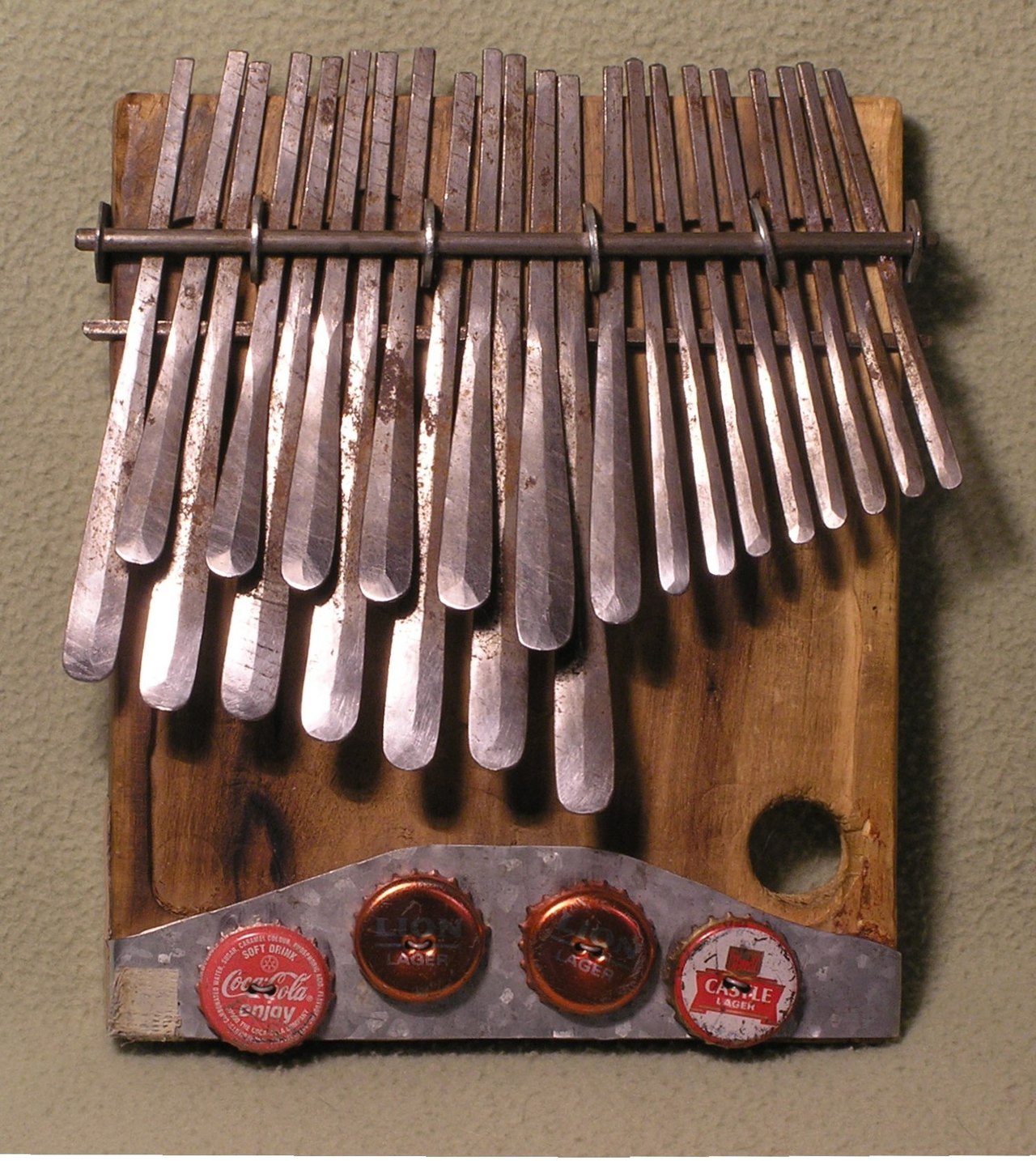
Mbira Music of the Shona People II
Mbira Music
The mbira is one of the most sophisticated melodic instruments in sub-Saharan Africa, and illustrates some of the style-defining features of African instrumental music. The melodic patterns played on the instrument are outlined as series of four short repetitive phrases, each of which consists of twelve beats (Berliner, 1993:75). These ostinato phrases are progressively subjected to minor variations. The use of repetitions in this manner lends to mbira music a cyclic character that is quite comparable to the rhythmic ostinato patterns that typify African drumming. One of the reasons why this instrument has been very popular in the United States, and indeed in many Western countries, is that its melodic phrases outline harmonic patterns that sound similar to those of Western music.
There are two distinct parts in mbira music: a leading part and a follower part. The leading part is known as the kushaura, while the follower part is known as the kutsinhera (Berliner, 1993: 73). But while these two parts are often played by two players, the parts may be combined by a very competent mbira player using a single instrument. In the audio example, the music starts with the kushaura, followed by the kutsinhera played on another mbira. Try and identify these two parts, and also pay attention to the following elements of style in the music:
- The generation of chordal patterns, which sound similar to those found in Western music.
- A polyphonic relationship, resulting from the combination of different melodic patterns.
- An interlocking relationship between different melodic parts. This characteristic is explained further below as "inherent patterns."
- A high density of texture, resulting from the combination of different qualities of the mbira, the hosho, the drums, handclaps as well as the human voice.
- An inherent element of hierarchy in the division of the parts into kushaura, kutsinhera, the use of accompaniment patterns as provided by handclaps, the hosho, and, finally, drums.
Composer: 0
-
"Nhemamusasa"
Elements of Style
We have established certain key stylistic features of African music in the discussion of Yorúbá drumming and Mbira music above. These are:
- Polyrhythm: This refers to the simultaneous combination of different rhythmic patterns.
- Melorhythm: This phrase was coined by ethnomusicologist Meki Nzewi to describe African melodic patterns, which have a strong percussive character, as illustrated in the patterns played by the iyaalu in Yorúbá dùndún music.
- Cyclic patterns: The repetition of rhythmic and melodic patterns often lends a cyclic or circular character to African performance. This feature is illustrated in both mbira and dùndún audio examples.
- Standard Patterns: These are patterns associated with specific secondary instruments in indigenous ensembles. The patterns that are associated with the secondary drums in the Yorúbá dùndún ensemble are examples of such patterns.
- Inherent patterns: These are patterns that our ears tend to pick up in a performance, although such patterns are not necessarily played as individual patterns. The charm of mbira music derives significantly from the unlimited potential of the music to make our ears re-group or "re-compose" its patterns in this manner.
Composer: 0
-
"Nhemamusasa"
Composer: 0
-
"Nhemamusasa" [ 00:00-00:47 ]00:46
Kushaura-the leading mbira begins the performance
Composer: 0
-
"Nhemamusasa" [ 00:48-01:44 ]00:57
Kutsinhira-the follower mbira joins kushaura
Composer: 0
-
"Nhemamusasa" [ 01:45-02:30 ]00:45
Hosho, a rattle, joins the performance
Some Important Features of This Song
- An ostinato-propelled form within which repetitive phrases are continuously subjected to a gradual, almost unnoticeable, process of variation.
- Chordal patterns which sound similar to those found in Western music.
- Polyphonic relationships that result from the combination of different melodic patterns.
- Interlocking relationships between different melodic parts, which help to generate an almost infinite number of resultant melodies. These are melodies that are not necessarily played as individual patterns: they emerge from the interaction of independent melodies.
- A high density of texture, resulting from the combination of different qualities of sound as played by the two mbiras, the rattles that are attached to the sound box of the mbiras, and the hosho-a separate instrument that later joins the performance.





African people made instruments from materials available to them, like wood, gourds, animal horns and skins.






